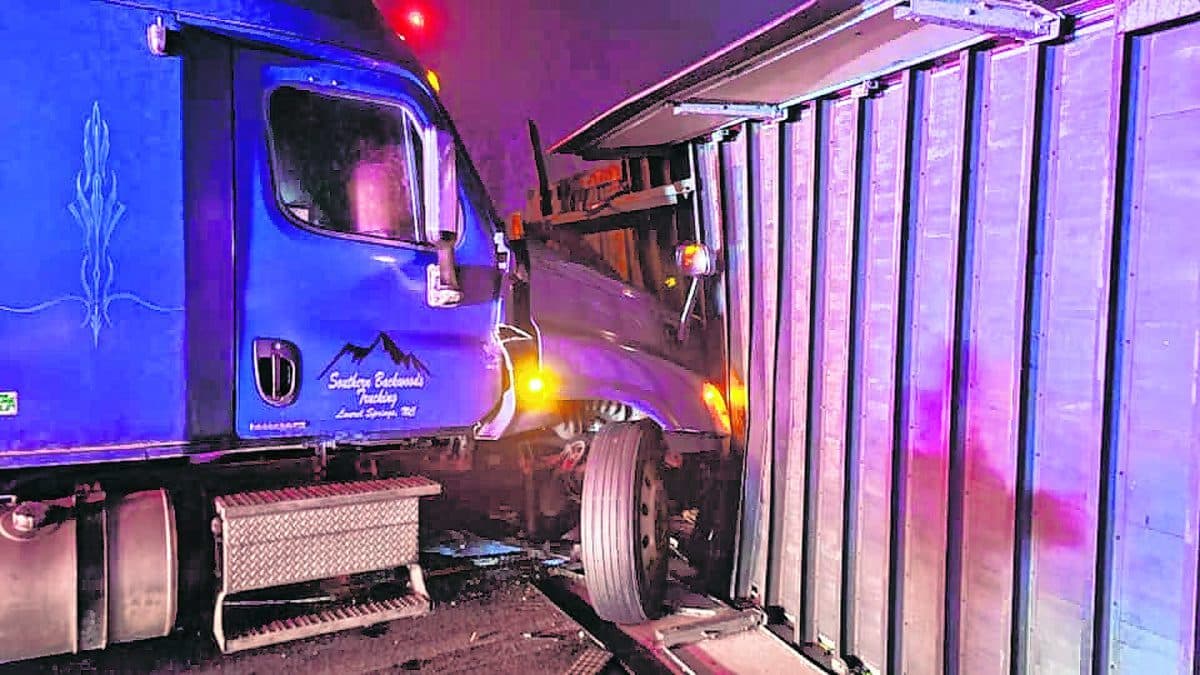Wednesday marked the 75th — and final — reunion for the Columbus High School Class of 1941.
“This is our swan song,” class member Mary Whittington Glasson said with a tranquil acceptance.
Of the 202-member class, 15 former classmates, now well into their 90s, attended the event at Sirloin Stockade, 3114 N. National Road, in Columbus.
Many smiles and enthused faces could be seen within the upbeat and festive atmosphere. Like at most reunions, three to four people were chatting and laughing at each table, while others appeared to be quietly looking around for someone they hoped to see.
[sc:text-divider text-divider-title=”Story continues below gallery” ]
For some, whose vision wasn’t as sharp as may been at earlier reunions, that was a little more of a challenge this year, class member Jenet Middendorf Borgman said.
Nevertheless, as the reunion has done every five years since 1966, opportunities emerged for former school chums to share memories from times long past.
Prior to the reunion, both Glasson and class president Bob Birk took time to describe what it was like coming of age during one of the most tumultuous eras in Bartholomew County history.
Hardship
When the Great Depression began with the U.S. stock market collapse on Oct. 29, 1929, the future Class of 1941 was just a few months into its first year of elementary school. For the rest of their childhoods, many of their parents faced a daily challenge in providing for their offspring.
“But we (as kids) never knew we were poor,” Glasson said “Everybody was in the same boat.”
Although Birk’s father struggled to feed his family of four on $5 a week, his grandmother made sure no one went hungry, as she fixed meals for those rooming at her men’s boarding house, Birk said.
While hunger also was not an issue on the farm near Newbern where Glasson grew up, she remembers visiting a large Columbus family that consumed nothing but popcorn and iced tea for their Sunday dinners, Glasson said.
In order to help her family while not in class, the teenage Glasson did all the housework and cooking for a disabled mother six nights a week, earning $2 weekly for her efforts.
But she was fine with that. After all, a woman could buy all the materials needed to make her own dress for only a quarter, Glasson said.
Meanwhile, Birk delivered groceries to families that often paid their bills with government coupons issued at the rate of $5 a month, he said.
Recovery
Slowly, economic conditions began to improve. In 1937, Cummins Engine Co., co-founded by Clessie L. Cummins and Joseph I. Irwin, turned a profit for the first time in its 18-year history.
Cummins introduced the industry’s first 100,000-mile warranty three years later, creating jobs as customer orders began to skyrocket for the diesel engine maker.
Beginning in 1940, more employment opportunities opened up after a groundbreaking was held on a new Tabernacle Church of Christ that would feature a soaring 166-foot monolithic tower.
“Oh, that was just ‘way out there’ for the folks in Columbus,” Birk said with a laugh.
A 1941 issue of Time Magazine stated the $600,000 price tag for what is now known as First Christian Church made it “the costliest Modern church in the world,” causing many in Columbus to shake their heads in disbelief.
“Some were for it, some against it, and many thought it was too much money,” Glasson said regarding the church at 531 Fifth St., completed in 1942. “But it was quite an event.”
Still more jobs would come through the federal Work Projects Administration in the form of a $250,000 storm sewer project that ran from Hutchins Avenue to the Driftwood River, Birk said.
Suddenly, teens had a little extra money to go to Zaharakos ice cream shop, the favorite hangout for CHS students in 1941, according to then-high school senior Marjorie Linsmith Porter.
The downtown ice cream parlor, commonly referred to as “The Greeks,” was such an attraction that many students sneaked away from campus early in order to get a seat, Porter said.
But as employment opportunities increased, so did the sound of war drums emanating from across two oceans, Birk and Glasson said.
War
Although the Dec. 7, 1941 bombing of Pearl Harbor wouldn’t happen until seven months after commencement, most in Bartholomew County realized war was imminent long before the Japanese attack, Birk said.
The country’s first-ever peacetime military draft was enacted in the fall of 1940. A short time later, thousands of Indiana National guardsmen were called into active military service.
“You will be called upon to give much of yourself to preserve this American way of life,” CHS Principal Otto Hughes wrote in the 1941 yearbook. “Thank God you are still free, still captains of your souls.”
“We were very nervous, and very much aware what was going on,” Glasson said.
“But we thought the government would take care of these things and our worries would go away,” class member Hester Ann Beatty Moore said. “I think most thought that way — right up until Pearl Harbor.”
Although the war effort demanded rationing of everything from shoes and clothes to tires and gasoline, Glasson said she doesn’t recall hearing anyone complain.
Four members of her class would make the ultimate sacrifice in World War II: Glen Dale Bowers Jr., Herbert William Loesch, Walter Ott Jr. and Donald L. Wright.
But compared to the number of subsequent CHS graduates who lost their lives in military service, the Class of 1941 felt fortunate, Birk said.
Post-war
After the soldiers and sailors came home, many in the class spread across the country for opportunities to provide for themselves and their families.
Although a few chose not to marry, Naomi Rose Ferry Haza (1924-2010) set a class record by giving birth to eight children.
While Columbus would eventually grow to its current population of 43,191, neither Glasson nor Birk expressed surprise by the gradual growth over the past eight decades.
“We have to have progress,” Glasson said. “We’ll always need forward-thinking visionary people getting us to the right place.”
When the city reached a population of 10,000 in the late 1930s, “that was a really big deal,” Birk said.
The city population grew to 11,738 by the time the class of 1941 graduated.
Although Glasson didn’t question America’s involvement in World War II, she admits having mixed feelings about subsequent military conflicts from Korea (1950-53) to Iraq (2003-11).
“We don’t need to rule the world and should be more selective about the wars we get into,” Glasson said. “I want people to support the country, but I’m in favor of negotiations over war.”
Besides military campaigns, there has also been a war on drugs.
For Glasson, the increasing use of methamphetamine and heroin in recent years illustrates the failure of the Reagan-era “Just Say No” approach to drugs.
“We used to blame the addicts, but we need to be more understanding,” Glasson said. “We need to help more than condemn. More love and less hate.”
Birk said while his generation smoked cigarettes and drank alcohol when they were young, they were mostly unaware of the health hazards at the time.
“I just can’t understand how young people can do something they know will kill them,” he said. “But if I were to condemn it, it wouldn’t change anything.”
Twilight
At the 25th reunion in 1966, 71 of the classmates showed up at Harrison Lakes Country Club. But when the 70th reunion arrived in 2011, only 26 attended.
Both Glasson and Birk realize that trying to plan for future reunions would be overly optimistic at their age.
But as Birk spoke, the 93-year-old displayed an energy and enthusiasm like that of a much-younger man.
His efforts at organizing the 75th reunion were partly motivated by a desire to set a competitive record established by another class, Birk said.
While Glasson says she’s grateful she can still drive, work in her garden and take care of herself, the 93-year-old seems comfortably resigned to her late stage in life.
“There has to be an end to things,” Glasson said. “But I’m lucky to be alive every day. I still try to enjoy life as much as I can and have no regrets.”
[sc:pullout-title pullout-title=”Class of 1941 overview ” ][sc:pullout-text-begin]
Columbus High School Class of 1941
Class size: 202
Date of commencement: May 22, 1941
Top scholars: Ruth A. Barrows (valedictorian), Lorajean Doup (salutatorian), Robert Lee Carmichael.
Class officers: Robert Birk, president; Robert Meyer, vice president; Joan Robinson, secretary; Hesterann Beatty, treasurer.
CHS Teacher of the Year: Loren S. Noblitt
History: In 1941, the campus of Columbus (Central) High School was bordered by Sixth, Seventh, Pearl and Chestnut streets. There were four buildings: Main (built in 1905), Wilson (1922), Pearl Street Gym (1924), and Industrial (1932). After the high school moved to the current location of Columbus North in 1956, the old campus became Central Junior High, with the Redman Memorial Music Building added in 1963. The aging campus were demolished in 2004 after a new $53 million Central Middle School was constructed one block to the east.
[sc:pullout-text-end]






